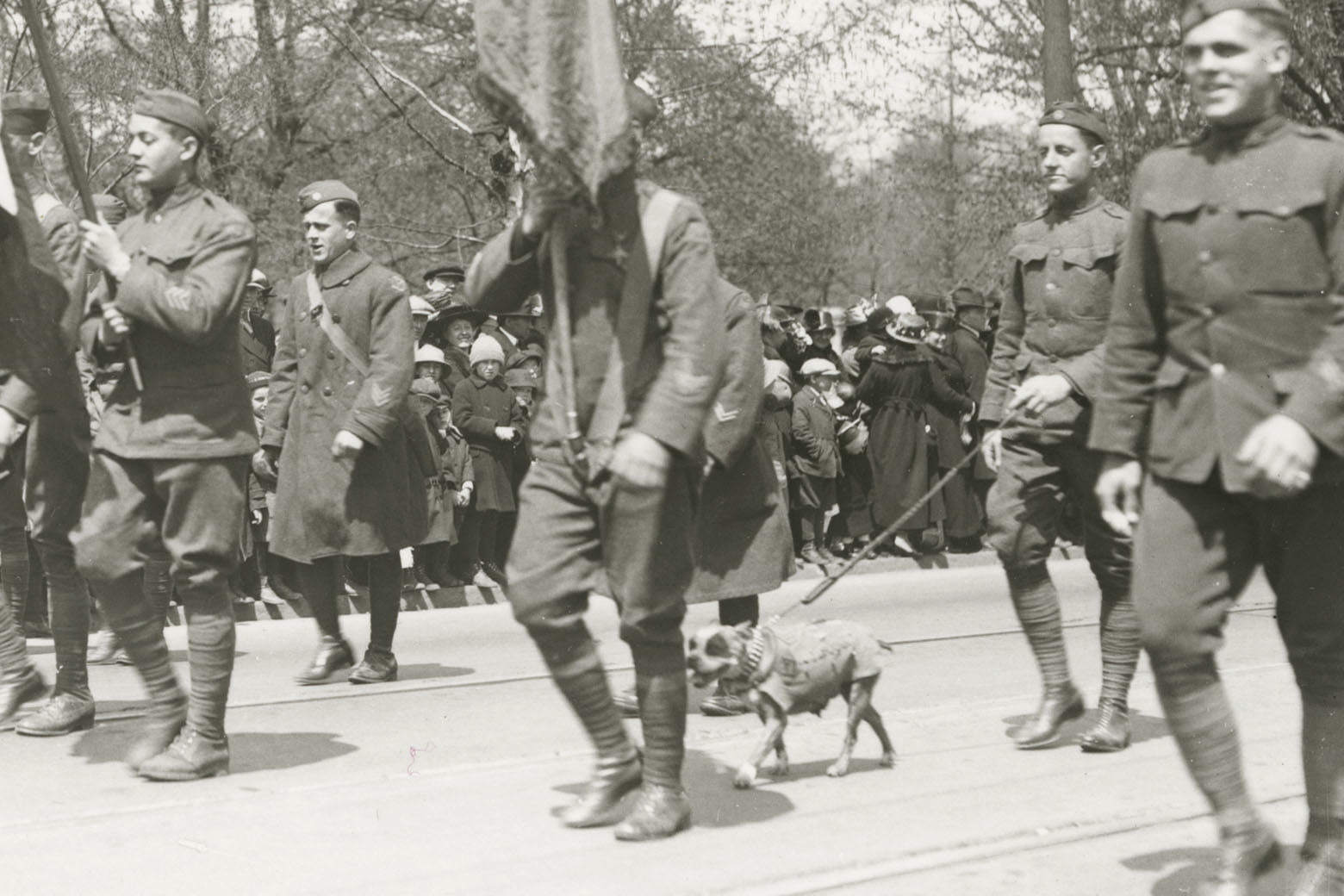
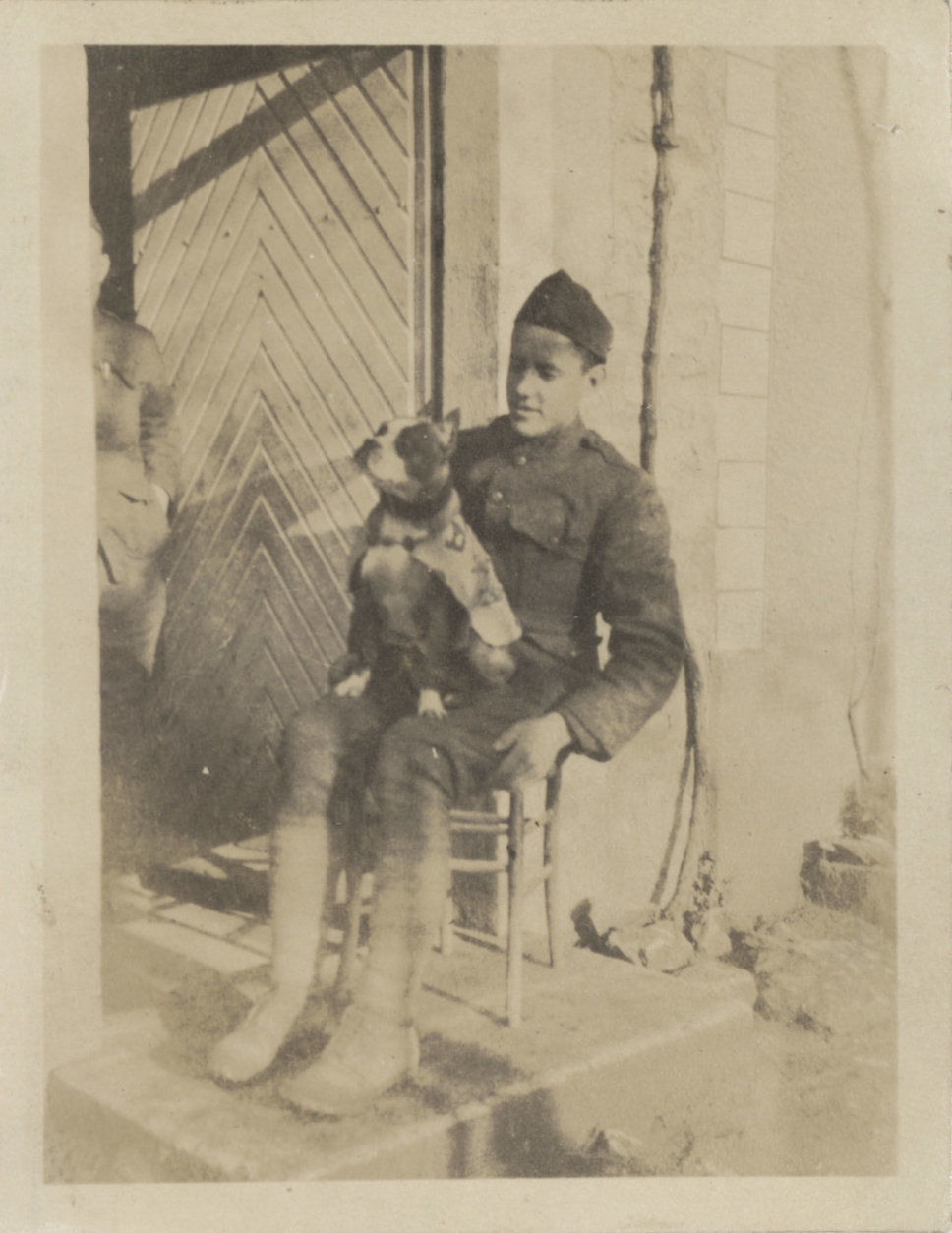
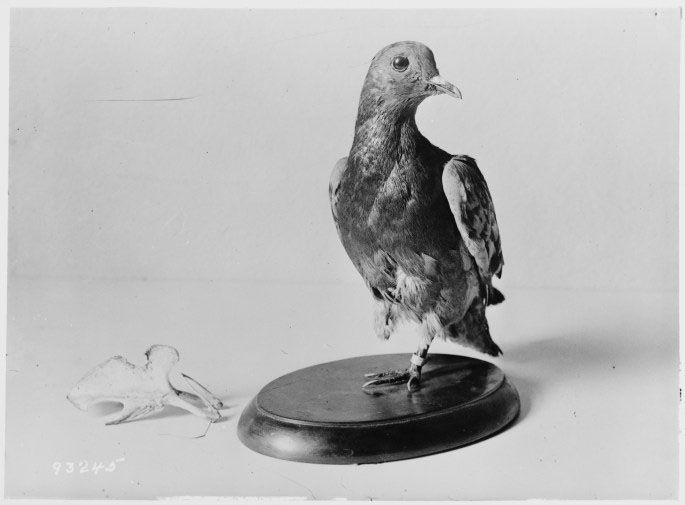
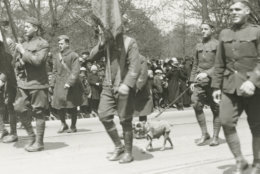
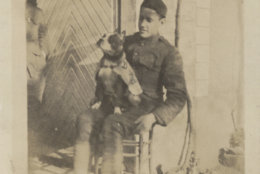
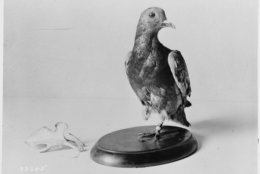
WASHINGTON — Not every heroic story of World War I is based on acts performed by humans.
A look at one exhibit on World War I at the Smithsonian’s National Museum of American History shows that among the soldiers, sailors and pilots fighting in the war, a dog and a pigeon played unique roles.
Kathleen Golden, a curator at the museum’s Armed Forces History Division, recounted for WTOP the story of Stubby, a mixed-breed dog that resembled a blend of breeds and today might be categorized as a pit-bull-type dog.
“Stubby was a stray dog that wandered onto Yale Field when the Yankee division was preparing to go off to war,” she said. At the time, part of the campus was serving as a training camp.
“He was adopted by the soldiers, and they smuggled him overseas,” she said.
That’s how Stubby became the mascot of the 102nd Infantry 26th Yankee Division. According to the story documented by the museum, Stubby was allowed to stay with the unit after “saluting” a commanding officer. He had been trained to perform a salute by putting his paw up to his eye.
Golden referred to Stubby as a mascot, not a war dog. The U.S. didn’t use dogs in war in World War I, at least not in the way we’ve come to think of war dogs, like those dogs that served alongside their handlers in World War II, Korea, Vietnam and wars since then, she said.
While his role was that of a mascot to the soldiers who carried him with them, Golden said Stubby did end up performing some deeds that proved to be heroic.
“He warned of mustard gas attacks,” she said. “He could smell that coming before soldiers could.”
Golden said Stubby’s behavior when gas attacks were imminent gave soldiers the time to get their gas masks on before being affected by the lethal gas. “He ended up getting gassed a bit himself, but he ended up recovering from that, she said. He also suffered a shrapnel wound.
There’s also an account of Stubby discovering a German soldier, biting him and keeping up his attack until U.S. soldiers arrived. For that, the mutt was awarded the rank of sergeant.
“I think he must have been a fairly intelligent little dog,” Golden said.
But his intelligence isn’t what landed him a spot on the campus of Georgetown University. His owner, veteran Bob Conroy, attended Georgetown after returning from the war. “That’s how Stubby ended up being the mascot for the Hoyas,” he said.
Now, Stubby, preserved over a plaster cast, stands at attention in part of an exhibit on the third floor of the National Museum of American History, in the exhibit titled “The Price of Freedom.”
Cher Ami: The carrier pigeon that didn’t quit
Stubby’s not the only animal recognized for his contributions during wartime. There’s also a pigeon, identified as Cher Ami in the exhibit as well.
“Pigeons were actually used by the Signal Corps to relay messages back and forth to different units,” Golden said. Messages would be tucked into small capsules that would then be attached to the carrier pigeons’ legs.
In the case of Cher Ami, the bird was used to relay a message that an American battalion trapped behind enemy lines was at risk of being hit with friendly fire. Cher Ami was delivering the critical message when catastrophe hit.
“Part of the bird’s breast was shot away, and one of its legs,” but Cher Ami succeeded in delivering the message, Golden said. The bird survived and was even a recipient of the French Croix de Guerre. Cher Ami died at Fort Monmouth, New Jersey, in 1919.
The story of Cher Ami isn’t really over yet. Golden said one of her colleagues who’s been researching the story, is trying to settle something about Cher Ami: including whether the bird is a male or a female. “There’s a little bit of conflicting information,” she said.
Adopting mascots in wartime wasn’t unique to World War I. During the Civil War, birds, goats, and even an eagle named “Old Abraham” were adopted as companions, Golden said. “Just the idea of having this creature — it’s just pure comfort,” she said.








